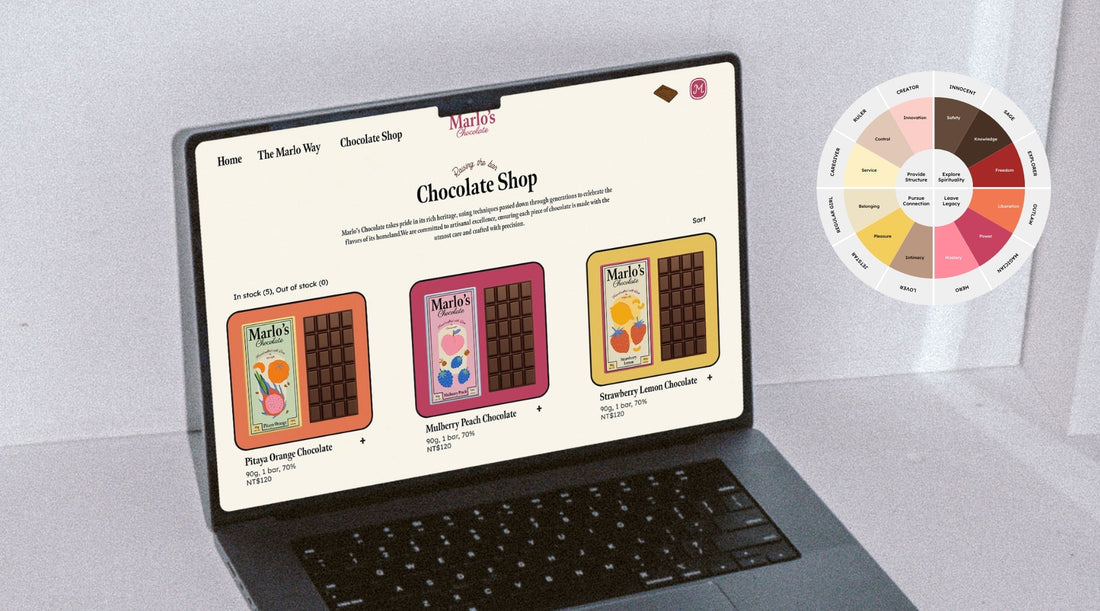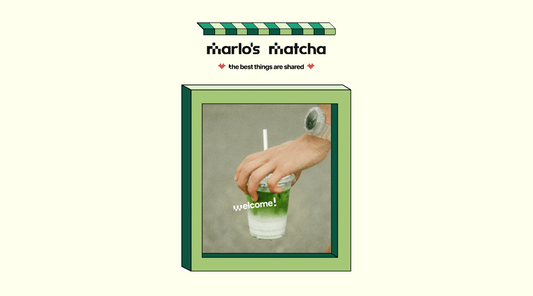
Brand Archetypes—A Complete Guide for Designers
What Are Brand Archetypes?
Brand archetypes are universally recognized character types that help define the personality, tone and story of a brand.
Based on Carl Jung's theory of archetypes, they tap into deep, instinctive ways people relate to narratives. This gives brands a way to connect emotionally with their audience.
Your brand archetype represents the core personality and motivation driving your brand, while tone of voice is simply how your brand expresses itself. Think of the archetype as who your brand is, and tone as how it speaks.
Brand archetypes offer several advantages for designers.
They humanize brands with familiar character traits that audiences understand. They create emotional connections by tapping into universal experiences. They provide consistency across all brand touchpoints. And finally, they differentiate brands through distinct personalities that stand out.
Now let's explore the 12 core brand archetypes that you can apply to your design projects and help your clients build stronger brand identities.
Meet the 12 Brand Archetypes
Understanding these 12 brand archetypes gives you a powerful framework for creating brand guidelines for clients.
Each archetype has distinct goals, desires, and strengths that can shape your design decisions.

Innocent
The Innocent archetype strives for simplicity and purity with a goal to explore spirituality and a desire for safety.
These brands focus on goodness, morality, and nostalgia, drawing on strengths of optimism and honesty. They communicate with straightforward messages and often use clean, simple visuals with soft colors.
Dove exemplifies this through its commitment to natural beauty and honest advertising.
Sage
Sage brands pursue truth and understanding above all else, with a goal to explore spirituality and a desire for knowledge.
Drawing on strengths of intelligence and insight, they position themselves as trusted sources of wisdom. Their communication style tends to be thoughtful and educational.
Google represents this archetype by focusing on organizing information and making knowledge accessible to everyone.
Explorer
Explorer brands seek new experiences and push boundaries with a goal to explore spirituality and a desire for freedom.
Leveraging strengths of curiosity and adventurousness, they appeal to the human desire for discovery and independence. Their visual identity often features rugged elements and outdoor settings.
The North Face embodies this spirit by encouraging customers to venture outside their comfort zones and explore the natural world.
Outlaw
Outlaw brands challenge conventions and disrupt the status quo with a goal to leave a legacy and a desire for liberation.
With strengths in audacity and independence, they appeal to those who feel constrained by society and want to break free. Their identity often features bold, rebellious elements.
Harley-Davidson exemplifies this through its association with freedom, rebellion, and counterculture.
Magician
Magician brands transform the ordinary into the extraordinary with a goal to leave a legacy and a desire for power.
Drawing on visionary and charismatic strengths, they create moments of wonder and surprise that feel special and unique. Their visual language often incorporates elements of magic and transformation.
Disney represents this archetype through its ability to create immersive, magical experiences that transport people to different worlds.
Hero
Hero brands inspire people to overcome challenges and achieve their potential with a goal to leave a legacy and a desire for mastery.
With strengths in determination and bravery, they focus on triumph, strength, and accomplishment. Their visual identity often features bold, powerful elements.
Nike embodies this archetype through its motivational messaging and focus on athletic achievement and personal victory.
Lover
Lover brands celebrate relationships, beauty, and sensory experiences with a goal to pursue connection and a desire for intimacy.
Using strengths of passion and warmth, they create intimate connections and appeal to desires for attractiveness and belonging. Their visual identity often features elegant, sensual elements.
Chanel represents this archetype through its focus on luxury, beauty, and emotional connection.
Jester
Jester brands bring joy and lightheartedness to everyday life with a goal to pursue connection and a desire for pleasure.
Utilizing strengths of playfulness and humor, they connect with audiences and make ordinary moments fun. Their visual identity often features bright colors and playful elements.
M&M's exemplifies this through its humorous characters and focus on making candy consumption a fun experience.
Everyman
Everyman brands emphasize common values and inclusivity with a goal to pursue connection and a desire for belonging.
With strengths in humility and relatability, they create products and experiences that feel accessible to everyone. Their visual identity often features practical, straightforward elements.
IKEA embodies this through its focus on affordable, functional design for the average person.
Caregiver
Caregiver brands protect and nurture others with a goal to provide structure and a desire for service.
Drawing on strengths of compassion and support, they focus on improving lives through generosity. Their visual identity often features gentle, reassuring elements.
UNICEF represents this archetype through its mission to protect children and provide essential services to those in need.
Ruler
Ruler brands project authority and expertise with a goal to provide structure and a desire for control.
Leveraging strengths of leadership and responsibility, they establish standards of excellence and emphasize quality and prestige. Their visual identity often features refined, sophisticated elements.
Rolex embodies this archetype through its focus on precision, heritage, and status as the definitive luxury timepiece.
Creator
Creator brands emphasize innovation and self-expression with a goal to provide structure and a desire for innovation.
With strengths in creativity and vision, they inspire people to imagine new possibilities and create meaningful things. Their visual identity often features artistic, imaginative elements.
Apple represents this archetype through its focus on innovative design and tools that help people express their creativity.
How to Use Brand Archetypes with Clients
Step-by-Step Process
Applying brand archetypes with clients starts with gathering the right information. At Marlo Studios, we collect essential details about each client through our Brand Questionnaire when they first join us.
Our questionnaire covers everything needed to understand their brand position. We ask about the founder, the brand itself, their target audience, industry specifics, and their social media presence.
This comprehensive approach gives us a clear picture of who they are and where they want to go.
After analyzing their responses, we narrow down to three potential archetypes that align with their goals and personality.
Once the client has chosen their archetype, this becomes a helpful guide for our design decisions like color choices, typography, imagery, tone etc.
Marlo Studios Example
Let's look at how we applied the Innocent archetype to Marlo's Chocolate, a concept brand we created for our Brand Guidelines 2.0 Template.

The Innocent
Goal: Explore Spirituality.
Desire: Safety.
Brands with an Innocent archetype are characterized by themes of simplicity, purity and optimism, which align with Marlo's Chocolate's focus on warmth, joy and authenticity.
The brand's values, such as creating a joyful, human connection and conveying warmth through its chocolate, fit well with the Innocent's desire to spread happiness and create a sense of comfort and positivity.
Innocent brands see the world as wondrous and fun and thrive on passing that feeling on, spreading joy where they can.
Strength: Driven by a commitment to honesty, you excel at transforming simple ideas into a positive and genuine brand experience. Your tone of voice is likely to be warm and welcoming, helping your audience build a strong and meaningful connection.
Conclusion
Brand archetypes are more than theory—they are practical, powerful frameworks that help brands stand out, connect deeply, and express themselves authentically.
When working with clients, define their brand archetype as the Innocent, Sage, Explorer, Outlaw, Magician, Hero, Lover, Jester, Everyman, Caregiver, Ruler and Creator to give their brand a persona that guides your design choices.
Ready to put this into action?
Get the brand archetype framework inside our Brand Identity Guidelines 2.0 Template, which we’ve developed at Marlo Studios since working with over 100 clients.



